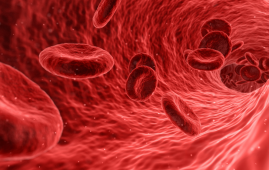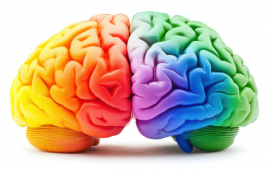

The “feel-good” hormone oxytocin may be released more readily when another person touches you. However, context is crucial. Researchers at Linköping University and the University of Skövde in Sweden have demonstrated that the circumstance has an impact on oxytocin levels both in the immediate aftermath and subsequently. The journal eLife has published their study.
Touch can help people feel more connected to one another and can have an impact on emotions. Examples include being hugged by a parent, having a warm hand on your shoulder, and receiving a love partner’s caress. Although touch and the sense of touch serve an extremely vital purpose, it is still unclear how this function truly functions.
The hormone oxytocin has been related to touch and social bonding in studies on animals. Regarding oxytocin’s function in interpersonal interactions and how the brain is both influenced by and may be influenced by this hormone, many concerns still need to be resolved. Researchers have looked at what transpires in the body when we experience a gentle touch to learn more about this.
“We saw that the body’s oxytocin response to touch was influenced by the situation: What had happened a few moments earlier and with whom the interaction takes place. The hormone does not function like an on/off button, but more like a dimmer switch,” says India Morrison, senior associate professor at the Department of Biomedical and Clinical Sciences at Linköping University.
The study, which appeared in eLife, included 42 women. The woman’s male partner stroked her arm as part of the experiment while functional magnetic resonance imaging, or fMRI, was used to track her brain activity.
Blood samples were taken regularly throughout the trial to observe any changes in the woman’s oxytocin levels. The researchers were able to determine whether hormone levels were associated with brain activity by combining the numerous measures.
The results of the social contact between the woman and her partner and what transpired when an unidentified, non-threatening male caressed her arm in the same way were compared. Her companion stroked her arm first in half of the experiments, and the stranger in the other half. The arm-stroking participants were told who was doing it.
“Our basic question was whether oxytocin levels would be higher when the woman’s partner touched her arm than when a stranger did it. The answer was yes, but only when her partner was the first to stroke her arm,” says India Morrison.
The women’s oxytocin levels rose throughout the social encounter when her boyfriend was first, then declined, before rising once again when the stranger did the same. However, there was no difference in oxytocin levels when the stranger touched her first. There was barely any change when her partner afterwards stroked her arm. The variations in oxytocin levels were associated with activity in brain areas critical for event contextualization.
In the body, oxytocin serves a number of purposes and is released in a variety of circumstances.
“It might be good to bear in mind that context matters, for instance when providing synthetic oxytocin in the form of a nasal spray as part of the treatment of mood-affecting conditions,” says India Morrison.
more recommended stories
 Fat-Regulating Enzyme Offers New Target for Obesity
Fat-Regulating Enzyme Offers New Target for ObesityKey Highlights (Quick Summary) Researchers identified.
 Spatial Computing Explains How Brain Organizes Cognition
Spatial Computing Explains How Brain Organizes CognitionKey Takeaways (Quick Summary) MIT researchers.
 Gestational Diabetes Risk Identified by Blood Metabolites
Gestational Diabetes Risk Identified by Blood MetabolitesKey Takeaways (Quick Summary for Clinicians).
 Phage Therapy Study Reveals RNA-Based Infection Control
Phage Therapy Study Reveals RNA-Based Infection ControlKey Takeaways (Quick Summary) Researchers uncovered.
 Pelvic Floor Disorders: Treatable Yet Often Ignored
Pelvic Floor Disorders: Treatable Yet Often IgnoredKey Takeaways (Quick Summary) Pelvic floor.
 Urine-Based microRNA Aging Clock Predicts Biological Age
Urine-Based microRNA Aging Clock Predicts Biological AgeKey Takeaways (Quick Summary) Researchers developed.
 Circadian Control of Neutrophils in Myocardial Infarction
Circadian Control of Neutrophils in Myocardial InfarctionKey Takeaways for HCPs Neutrophil activity.
 E-Cigarette Use and Heart Attack Risk in Former Smokers
E-Cigarette Use and Heart Attack Risk in Former SmokersKey Takeaways for Clinicians and Nurses.
 36-Week Pre-eclampsia Screening May Reduce Term Risk
36-Week Pre-eclampsia Screening May Reduce Term RiskA New Preventive Strategy for Term.
 Cardiovascular Risk and Sudden Cardiac Death in Diabetes
Cardiovascular Risk and Sudden Cardiac Death in DiabetesRising Sudden Cardiac Death (SCD) Risk.

Leave a Comment